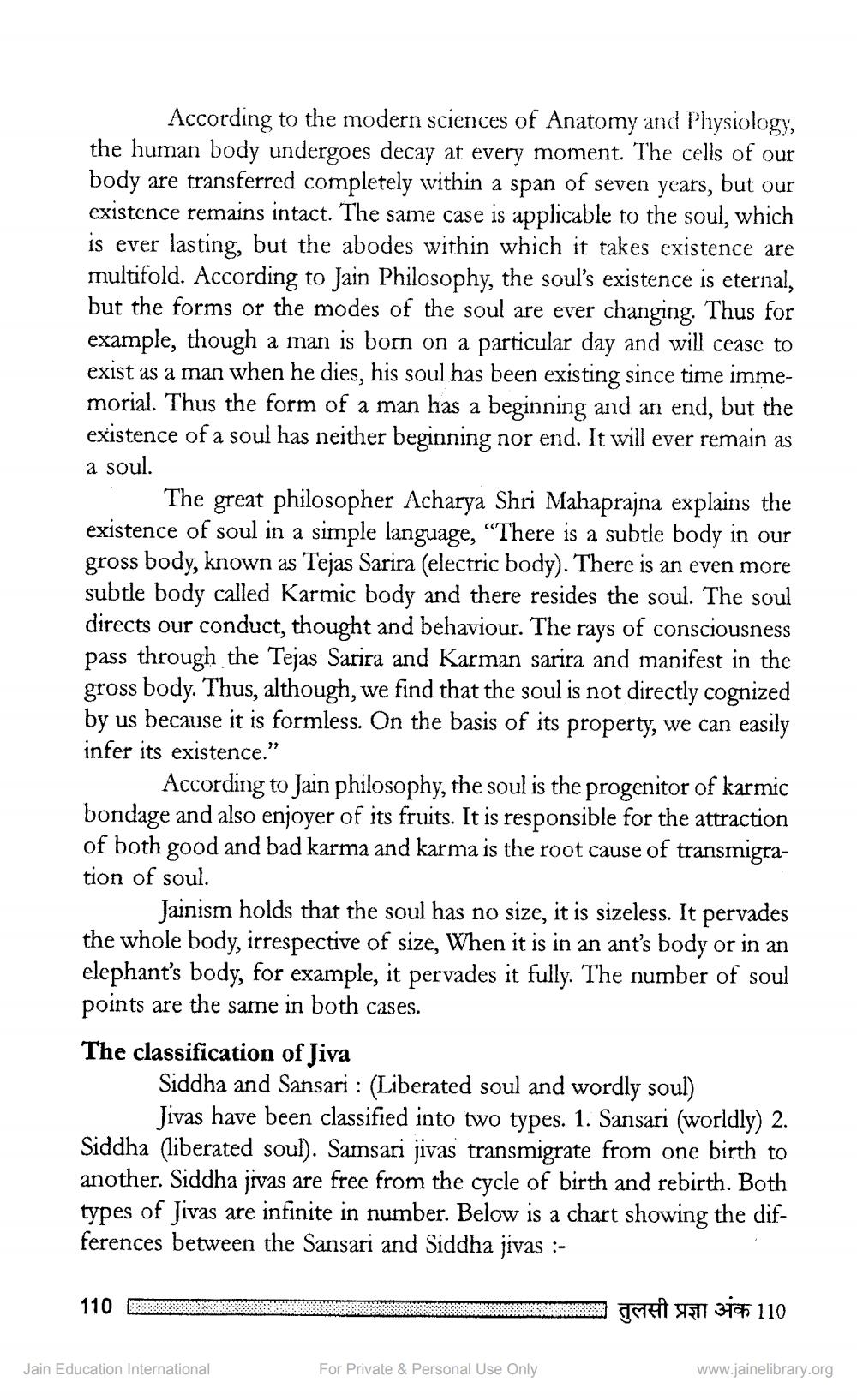________________
According to the modern sciences of Anatomy and Physiology, the human body undergoes decay at every moment. The cells of our body are transferred completely within a span of seven years, but our existence remains intact. The same case is applicable to the soul, which is ever lasting, but the abodes within which it takes existence are multifold. According to Jain Philosophy, the soul's existence is eternal, but the forms or the modes of the soul are ever changing. Thus for example, though a man is born on a particular day and will cease to exist as a man when he dies, his soul has been existing since time immemorial. Thus the form of a man has a beginning and an end, but the existence of a soul has neither beginning nor end. It will ever remain as a soul.
The great philosopher Acharya Shri Mahaprajna explains the existence of soul in a simple language, "There is a subtle body in our gross body, known as Tejas Sarira (electric body). There is an even more subtle body called Karmic body and there resides the soul. The soul directs our conduct, thought and behaviour. The rays of consciousness pass through the Tejas Sarira and Karman sarira and manifest in the gross body. Thus, although, we find that the soul is not directly cognized by us because it is formless. On the basis of its property, we can easily infer its existence.”
According to Jain philosophy, the soul is the progenitor of karmic bondage and also enjoyer of its fruits. It is responsible for the attraction of both good and bad karma and karma is the root cause of transmigration of soul.
Jainism holds that the soul has no size, it is sizeless. It pervades the whole body, irrespective of size, When it is in an ant's body or in an elephant's body, for example, it pervades it fully. The number of soul points are the same in both cases. The classification of Jiva
Siddha and Sansari : (Liberated soul and wordly soul)
Jivas have been classified into two types. 1. Sansari (worldly) 2. Siddha (liberated soul). Samsari jivas transmigrate from one birth to another. Siddha jivas are free from the cycle of birth and rebirth. Both types of Jivas are infinite in number. Below is a chart showing the differences between the Sansari and Siddha jivas :
110 D
wwwmond Toetum 31a 110
Jain Education International
For Private & Personal Use Only
www.jainelibrary.org




